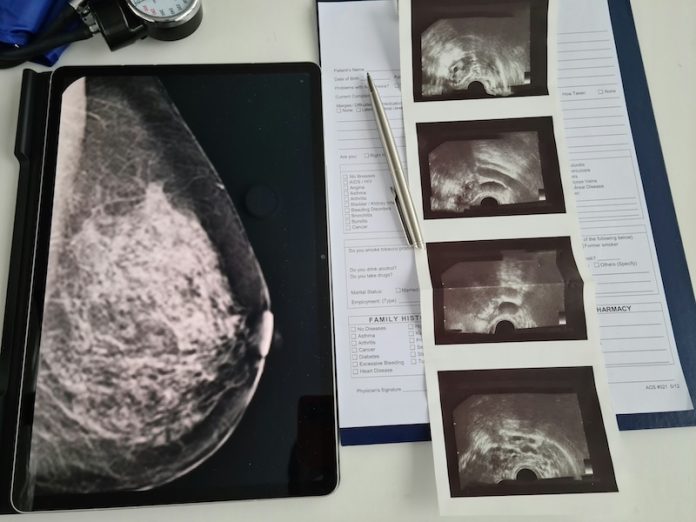
A new imaging technology developed at the University of Waterloo could improve how doctors detect and treat breast cancer by making cancerous tissue stand out more clearly from healthy tissue. The technology, which was originally used for prostate cancer, has now been refined with the help of artificial intelligence (AI) to work for breast cancer as well.
Using this method, known as synthetic correlated diffusion imaging (CDI), cancerous tissue appears to light up or glow in MRI scans. This makes it easier for doctors to see the difference between healthy and cancerous cells. The research was recently published in the journal Sensors.
Dr. Alexander Wong, a professor at the University of Waterloo and co-director of the Vision and Image Processing (VIP) Lab, explained why this breakthrough is important.
“This technology has great potential to not only improve breast cancer detection but also treatment. Our images provide key information that can help doctors decide on the best treatment for each patient,” he said.
How the Technology Works
The new imaging system works by analyzing how water molecules move through breast tissue. Cancerous tissue and healthy tissue have different structures, which affect how water flows through them.
Cancer cells are packed more irregularly than normal cells, which changes how water moves in those areas. CDI takes advantage of these differences by capturing and processing MRI signals in a way that highlights them.
By fine-tuning the imaging process using AI, researchers have been able to create images that show cancerous tissue more clearly. This can help doctors and radiologists better define the size and shape of tumors, making treatment more precise.
Benefits for Surgery and Treatment
This technology could be especially useful for surgeons. Right now, one of the challenges in breast cancer surgery is determining how much tissue to remove. If too little is taken, some cancer may be left behind, requiring a second surgery. If too much is removed, it could unnecessarily impact the patient’s appearance and quality of life.
With clearer imaging, CDI could give surgeons more precise information about the exact boundaries of a tumor. This would help them remove all the cancerous tissue in one surgery while minimizing the removal of healthy tissue.
Amy Tai, a Ph.D. student at the University of Waterloo working on this project, emphasized this point. “The more accurate we make CDI in showing the difference between cancerous and healthy tissue, the more effective treatment and patient outcomes can be,” she said.
Potential for Other Types of Cancer
The team developed and tested CDI for breast cancer using MRI scans from over 350 patients at 10 medical institutionsin a study by the American College of Radiology Imaging Network. Now, they hope to expand this technology to detect and treat other types of cancer, especially brain, neck, and head cancers.
Dr. Wong is optimistic about the future of this imaging method. “We have already shown great results for prostate cancer, and now we are seeing promising results for breast cancer. It’s exciting to think about how we can apply this technology to even more types of cancer,” he said.
Analysis of the Findings
This study represents a significant step in cancer imaging. Current MRI technology is already widely used in cancer diagnosis, but CDI enhances the clarity and accuracy of tumor detection, making it a valuable tool for radiologists and surgeons. If widely adopted, this method could lead to:
- Earlier and more accurate cancer detection, improving survival rates.
- More precise surgeries, reducing the need for repeat operations.
- Better treatment planning, allowing doctors to tailor treatments to individual patients.
Additionally, the potential to expand CDI beyond breast and prostate cancer suggests that this approach could become a key tool in detecting and treating multiple forms of cancer. Further studies and clinical trials will be needed to confirm its effectiveness, but the early results are promising.
The research findings can be found in Sensors.
Copyright © 2025 Knowridge Science Report. All rights reserved.



